Jhomolhari Trek route is most covered one in Bhutan, almost every trekker in Bhutan land up choosing the excursion. The quest begins from short hikes through Pachhu (Paro River) as to let the trekker acclimatize for the high altitude. After climbing gently via Shana to Jangothang (4000m), the weather gets colder and climb gets steep along ridges. The site offers the view of Mt. Jhomolhari 7314m the second highest unclimbed mountain peak in the world along with snow-capped Mt. Jichu Drakey and Mt. Tserim Gang. The trek route gives chances of spotting yaks, takin (National Animal), and rhododendron flowers, as the route goes along yak pastures and natural wildflower gardens in the valleys.
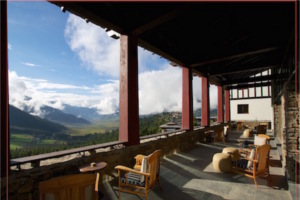
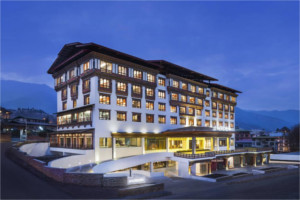
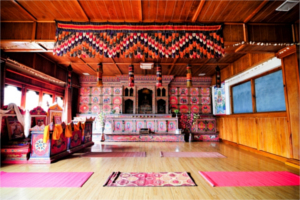
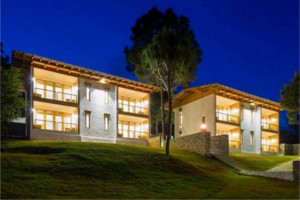
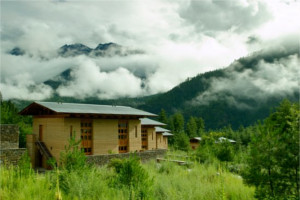
Welcome ceremonial reception by our representative at a traditional farmhouse. Transfer to the hotel at Paro. Visit around Paro town in the evening.
Overnight at Paro.
Early morning breakfast
Visit Ta Dzong, the National Museum. It was originally built as a watchtower in 1649, strategically located overlooking the Rinpung Dzong and the Paro valley. The watchtower was renovated in 1968 and transformed into national museum. The round shaped structure houses collection of Thangkas, 3D map of Bhutan, egg believed to be laid by a mule, iron links from Iron Bridge at Tamchog and many ancient and modern artifacts.
Note: Photography and videography are not allowed inside the museum.
Visit Rinpung Dzong, the administrative and religious center of Paro Dzongkhag (district). The fortress name translates to “Fortress on a Heap of Jewel” and has long history of having defended Tibetan invasion through the site.
Drive 14kms north to Drugyel Dzong, after a massive destruction by fire the Dzong remained as ruin for several years until recently to commemorate the birth of Gyalsey the prince, the Dzong is undergoing reconstruction to its former glory.
Overnight at Paro.
Start the trek from Drugyel Dzong at 2580m, and with a short descend on a wide trail, ascend gradually through rice terraces and millet fields. The trail further extends through apple orchards and rich forests till Gunyitsawa at 2810m. Gunyitsawa is the last stop on the border with Tibet. Reach the campsite beyond Sharna Zampa at 2870m.
Overnight at Camp.
Trek along Pa Chu (Paro River), ascend and descend through pine, oak and spruce forests. Stop for lunch after just crossing the bridge over the Pa chu. Further follow the river uphill and climb through the shrubs and rhododendron trees.
Reach campsite at an altitude of 3750m.
Overnight at Camp.
Continue the trek till an army camp, follow the river and cross the tree line. Break for lunch upon reaching a yak herder’s camp. Continue trek to Jangothang at 4040m, the site offers a closer view of Mt. Jhomolhari.
Overnight at the camp.
Take a day at Jangothang to either rest and prepare for next day excursion or take short walks around the place to enjoy the view of the surrounding landscape.
Overnight at the camp.
Continue to follow the stream for half an hour and start to ascend towards the north with the sight of Mt. Jhomolhari, Jichu drakey, and Tserim Gang. Climb to the Nyele Pass at 4700m and then descend to Lingzhi at 4000m.
Overnight at the camp.
Cross through Yalila at 2820m if clear weather is in the forecast, the route offers the view of Mt. Tserim Gang and Masa Gang. As the trek route extends, negotiate short ascends and descends till reaching the campsite at Shodu at an altitude of 3963m.
The trek route is along the Thimphu River through rhododendron forests in abundance. Continue to ascend till the ruins of the Barshong Dzong, where the campsite is.
Overnight at the camp.
Start to descend down along the Thimphu River. Reach Dolam Kencho and the meadow campsite at an altitude of 3628m.
Overnight at the Camp.
Follow the route downward through forests with Golden Langurs as inhabitants to Thimphu valley.
Overnight at the hotel.
Breakfast
Visit the National Memorial Chorten (Stupa), built in memory of the 3rd King of Bhutan. Visit the Art School and Changangkha Lhakhang (a temple built in 12th century by a Tibetan saint).
Lunch
Visit the National Takin Reserve Center to see Takin, the national animal of Bhutan and Trashichhodzong (fortress of glorious religion). Trashichhodzong in its current form was completed in 1968 and it houses the throne room of His Majesty the King of Bhutan. It is also a center of monastic body and houses main secretariat building. The majestic Dzong located along the Wangchu (Thimphu River) has a Tendrel Thang which is the venue for Thimphu Dromchoe and Thimphu Tsechu, the annual Thimphu Festival where thousands of people fill the courtyard to witness the mask dances, traditional dances, and many more.
Visit Semtokha Dzong, five miles from main Thimphu town, the Dzong is considered to be the first ever built by Zhabdrung Ngawang Namgyel in 1629, therefore the oldest fortress in Bhutan. Located on a ridge overlooking the entire valley, the Dzong houses a chapel for protective deities Yeshe Goenpo (Mahakala) and Palden Lhamo of Bhutan.
Stop at Dochula pass 3100m on route to Punakha from Thimphu. Dochula pass is one of the famous landmarks in Bhutan from which one can sight the Himalayan Range of Bhutan on clear winter days. The place is adorned with Druk Wangyel Chorten, 108 stupas built to honor the 4th king of Bhutan and bring peace to the region. The stupas were built under the patronage of Ashi Dorji Wangmo Wangchuck.
Descend to Punakha Valley (1280m).
Punakha valley served as the capital of Bhutan till 1955 until it was shifted to Thimphu. The Punakha Dzong is still the winter seat of Je Khenpo (Chief Abbot) of the monastic body as the place has a temperate climate with Phochu and Mochu Rivers flowing through the fertile fields of the valley.
Visit Punakha Dzong.
Punakha Dzong or Pungthang Dewa Chenpai Phodrang, the palace of bliss was built in 1937 by Zhabdrung Ngawang Namgyel. The second oldest Dzong is religiously and architecturally significant to Bhutanese as it houses several sacred relics, scriptures, statues and is the place where the first king of Bhutan was crowned in 1907. Punakha Dzong is also famous for Punakha Drupchen where the 17th-century battle scene with Tibetan invaders are recreated and is followed by Punakha Tsechu where grand Thongdrel of Guru Rinpoche is unfurled with costumed mask dances and rituals.
Drive back to Thimphu in evening.
Overnight at Thimphu.
More sightseeing around Thimphu or take short hikes on outskirts of the valley.
Drive to Paro in evening.
Overnight at Paro.
daily tariff:USD 250 Per person per night
surcharges:
Solo Traveller: USD 40 per night
Dual Traveller: USD 30 per person per night
Three travellers and above: surcharges not applicable
Visa fees: One time payment of USD 40 per person.
daily tariff:USD 200 Per person per night
surcharges:
Solo Traveller: USD 40 per night
Dual Traveller: USD 30 per person per night
Three travellers and above: surcharges not applicable
Visa fees: One time payment of USD 40 per person.
A minimum of 3 star accommodation (4 & 5 star may require an additional premium).
All meals
A licensed Bhutanese tour guide for the extent of your stay
All internal transport (excluding internal flights)
Camping equipment and haulage for trekking tours